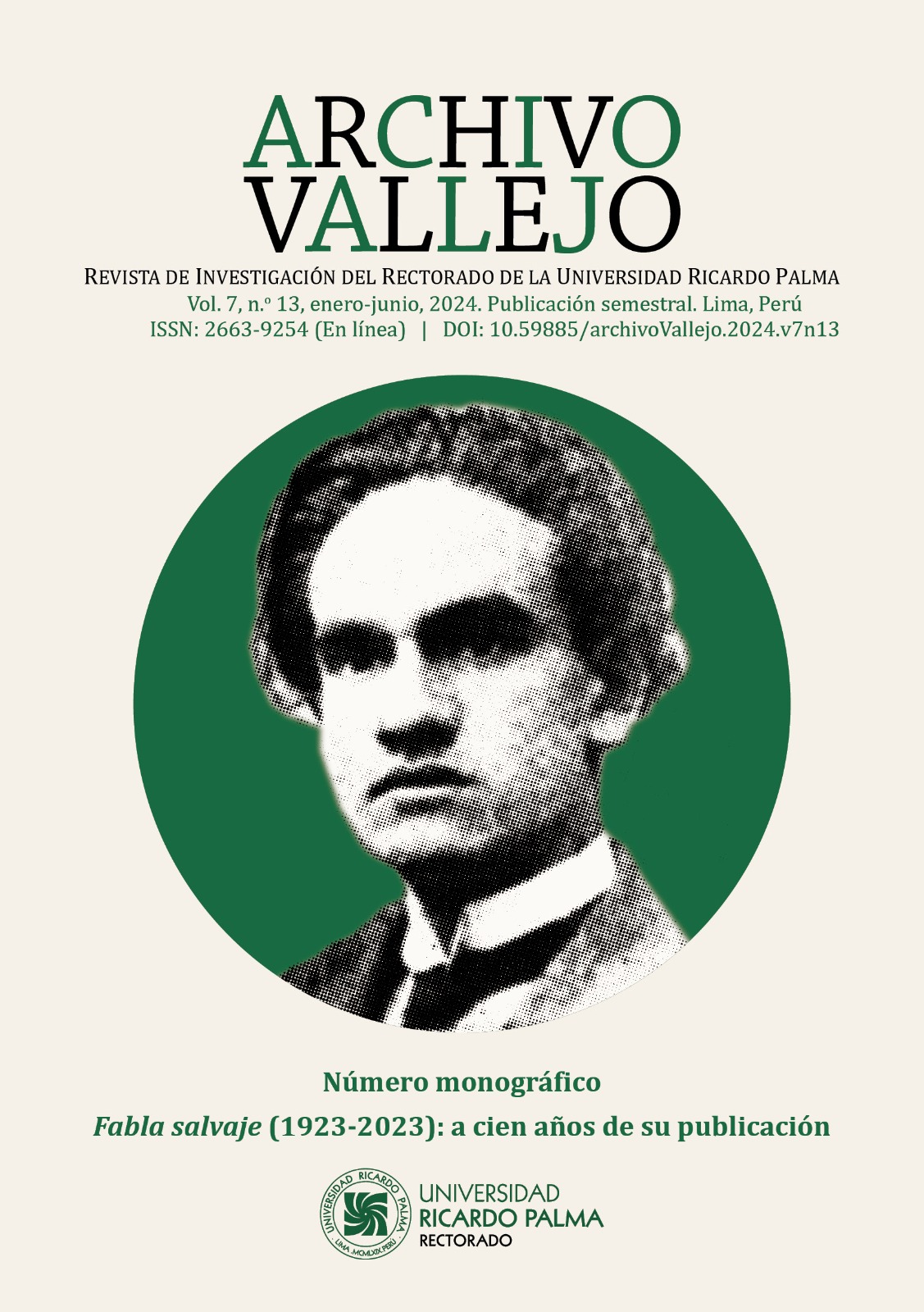Metafiction in Cien años de soledad: On Melquíades’ Manuscripts
DOI:
https://doi.org/10.59885/archivoVallejo.2024.v7n13.12Keywords:
Gabriel García Márquez, Cien años de soledad, metafiction, specular story, poetics of deciphermentAbstract
This paper delves into the metafictional character of the Melquíades manuscripts, with the aim of explaining exactly what the interplay of similarities and differences between the novel and the text that doubles it as a speculative tale consists of. Starting from her well-known hypothesis about the Jewish origin of the Buendía family, the author of this work argues, with theoretical and comparative arguments, that the spectacular ending of the novel, in which Aureliano Babilonia discovers the keys to Melquíades and thus gains access to the enigma contained in the manuscripts, is but a prefiguration of the act of reading-interpretation required by the novel itself, itself conceived and executed as an enigmatic and decipherable text. Tacitly polemicising the most recent theories of interpretation, the writer would thus have created the unusual image of a text which, far from being destined for infinite interpretation, would offer the reader the possibility of discovering and revealing its most crucial secrets.
References
Barthes, R. (1973). El grado cero de la escritura, seguido de Nuevos ensayos críticos. Siglo XXI.
Dällenbach, L. (1991). El relato especular. Visor.
Fernández-Braso, M. (1969). Gabriel García Márquez, una conversación infinita. Azur.
García Márquez, G. (1991). Cien años de soledad. Cátedra.
García Márquez, G. (1982). El olor de la guayaba. Conversaciones con Plinio Apuleyo González. La Oveja Negra.
García Márquez, G. y Vargas Llosa, M. (1991). La novela en América Latina. Diálogo. Universidad Nacional de Ingeniería.
Gide, A. (1963). Diario. Losada.
Gide, A. (1985). Los monederos falsos. Seix Barral.
Gil, A. J. (1997). La metaficción de Cien años de soledad: el pergamino hallado. En R. Pellicer y A. Saldaña (coords.), Quinientos años de soledad. Actas del Congreso «Gabriel García Márquez» (pp. 537-542). Tropelías.
Kafka, F. (1994). El proceso. Cátedra.
Lotman, Y. M. (1982). Estructura del texto artístico. Istmo.
Maturo, G. (1972). Claves simbólicas de Gabriel García Márquez. Fernando García Cambeiro.
Rodríguez, E. (1969). Novedad y anacronismo en Cien años de soledad. En P. G. Earle (ed.), Gabriel García Márquez (pp. 114-138). Taurus.
Wahnón, S. (1998). El judío errante en Cien años de soledad. En Universidad Nacional de Colombia (ed.), XX Congreso Nacional de Literatura, Lingüística y Semiótica. Cien años de soledad, treinta años después (pp. 41-60). Instituto Caro y Cuervo.
Wahnón, S. (2000). Memory: One Hundred Years of Solitude. En S. Beckwith (ed.), Charting Memory: Recalling Medieval Spain (pp. 194-228). Garland Publishing.
Wahnón, S. (2003). Kafka y la tragedia judía. Riopiedras Ediciones.
Wahnón, S. (2021). El secreto de los Buendía. Sobre Cien años de soledad. Gedisa Editores.
Downloads
Published
How to Cite
Issue
Section
License
Copyright (c) 2024 Sultana Wahnón

This work is licensed under a Creative Commons Attribution 4.0 International License.
Los contenidos publicados en la revista están bajo una licencia CC-BY 4.0, la cual permite:
- Compartir, copiar y redistribuir el material en cualquier medio o formato.
- Adaptar, remezclar, transformar y construir a partir del material para cualquier propósito, incluso comercialmente.
Bajo los siguientes términos:
- Atribución. Usted debe dar crédito de manera adecuada, brindar un enlace a la licencia, e indicar si se han realizado cambios. Puede hacerlo en cualquier forma razonable, pero no de forma tal que sugiera que usted o su uso tienen el apoyo de la licenciante.















